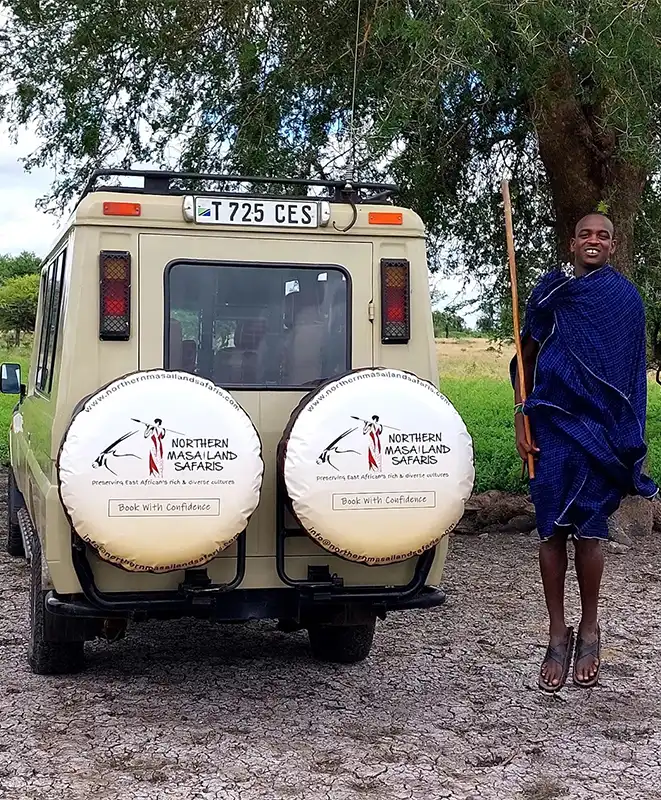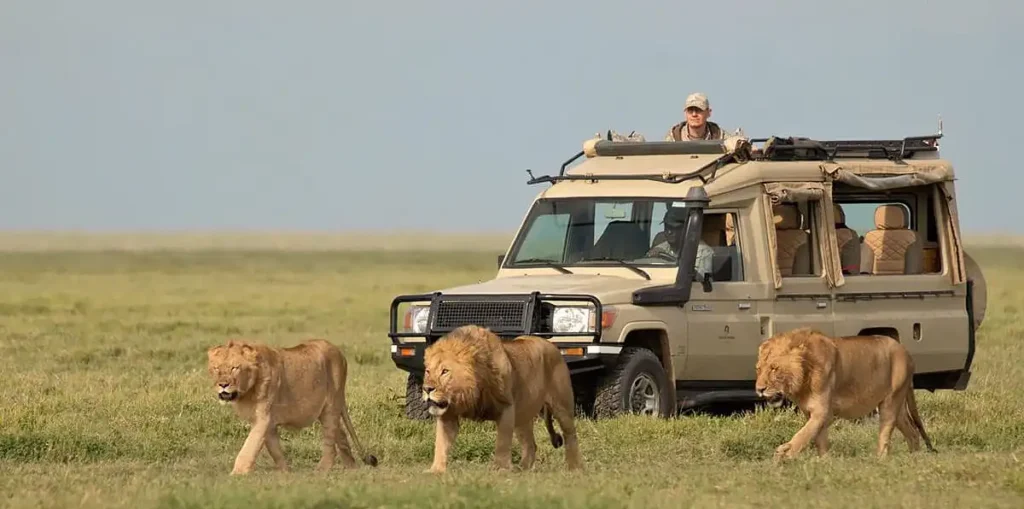If you’re after a less crowded, more peaceful Kilimanjaro climb, the Rongai Route might be your golden ticket. It’s the only trail that approaches the mountain from the north, starting near the Kenyan border. This means fewer trekkers, a drier climate (great during rainy seasons), and a completely different perspective of Africa’s highest peak.
With gentle slopes and a high summit success rate, Rongai is often recommended for those who want a more relaxed pace without sacrificing their summit chances. But don’t mistake “gentle” for “easy” altitude still demands respect, and summit night will test your grit.
Here’s what sets Rongai apart:
Quiet trails – Less traffic than popular southern routes.
Drier conditions – Ideal for shoulder or wet seasons.
Gentle gradients – Fewer steep climbs, especially in early days.
Unique scenery – From remote wilderness to alpine desert.
Wildlife spotting – Possible sightings of elephants, antelope, and monkeys in lower zones.
| Feature | Details |
|---|---|
| Distance | ~72 km (45 miles) round trip |
| Duration | 6–7 days |
| Difficulty | Moderate |
| Accommodation | Camping |
| Success Rate (7 days) | ~85–90% |
| Best Time to Go | Jan–Mar, Jun–Oct, Dec |
Day 1 – Rongai Gate (1,950 m) to Simba Camp (2,625 m)
Distance: 7 km (4.3 miles)
Hiking Time: 3–4 hours
Terrain: Forest and moorland quiet and peaceful start.
Day 2 – Simba Camp to Second Cave Camp (3,450 m)
Distance: 8 km (5 miles)
Hiking Time: 6–7 hours
Views: Kenya’s plains stretching endlessly below.
Day 3 – Second Cave to Kikelewa Camp (3,600 m)
Distance: 6 km (3.7 miles)
Hiking Time: 3–4 hours
Tip: Shorter day—perfect for gradual acclimatization.
Day 4 – Kikelewa to Mawenzi Tarn Camp (4,330 m)
Distance: 9 km (5.6 miles)
Hiking Time: 4–5 hours
Highlight: Mawenzi Peak’s jagged spires towering above camp.
Day 5 – Mawenzi Tarn to Kibo Hut (4,700 m)
Distance: 8 km (5 miles)
Hiking Time: 5–6 hours
Terrain: Alpine desert—dry, dusty, and exposed.
Day 6 – Summit Attempt: Kibo Hut to Uhuru Peak (5,895 m), then Horombo Hut (3,720 m)
Distance: 6 km up + 15 km down
Hiking Time: 12–16 hours
Challenge: The steepest, coldest, and most exhausting day—but worth every step.
Day 7 – Horombo Hut to Marangu Gate (1,870 m)
Distance: 20 km (12 miles)
Hiking Time: 5–7 hours
Celebration: Certificate in hand and that “I did it” smile.
Advantages:
Less crowded than southern routes.
Drier and less muddy in wet months.
Gentle, steady ascent good for beginners.
High success rate with 7-day itinerary.
Disadvantages:
Less varied scenery than Machame or Lemosho.
Longer transfer to start point.
Camping only no huts.
Rongai is the best wet-season route due to its dry northern side:
January–March – Cooler, quieter, chance of summit snow.
June–October – Warmer, clear skies, busier trails.
December – Good for holiday climbers, dry conditions.
Rongai is moderate in terrain difficulty, but altitude remains the biggest hurdle. Prepare by:
Doing long hikes with a loaded pack (6–8 kg).
Adding stair climbing or hill repeats.
Practicing a slow, steady pace pole pole!
Clothing: Layer system for all temperatures.
Footwear: Waterproof, broken-in boots.
Gear: Quality sleeping bag, trekking poles, headlamp, hydration pack.
Extras: Snacks, sunscreen, blister kit, camera.
Customise one of our recommended trips or design your own from scratch
or call us on: +255754982525


Book Your Safari Now & Get a Free Masai Culture Tour!
The Maasai are a proud and vibrant tribe known for their distinctive customs and way of life. This free tour offers a unique opportunity to interact with the Maasai people.
Still Have Questions? We’re Here to Help! Contact Us
To secure the best lodges and ensure park availability, we recommend booking at least six months in advance, especially if you’re planning to travel during peak seasons, such as June to October or December to February.
It’s simple. Reach out to us directly through our website, email, or WhatsApp. Let us know your:
Preferred travel dates
Group size
Budget and interests
We’ll send you a customized itinerary within 24–48 hours.
We’ll need your:
Travel dates (fixed or flexible)
Number of travelers (adults and children)
Safari preferences (e.g., luxury, mid-range, or budget)
Activities you’re interested in (e.g., game drives, hot air balloon, cultural visits)
To confirm your safari, we ask for a 30–50% deposit depending on the itinerary. The remaining balance is due 30 to 45 days before your safari begins.
Yes, it’s highly recommended. Your policy should cover medical emergencies, trip cancellation, and baggage loss.
A 30% to 50% deposit is required to confirm your safari booking.
The balance must be paid in full no later than 30 to 45 days before the safari start date.
Bookings made within 30 days of the safari require full payment at the time of confirmation.
We accept the following payment options:
Bank wire transfer (details provided upon request)
Credit/Debit card (processing fees may apply)
Mobile payment options are available in Tanzania
USD ($) is the preferred currency for all transactions
Please note: All bank charges and currency conversion fees are the responsibility of the client.
If you choose to cancel your safari, the following refund terms apply based on the number of days before your safari start date:
| Notice Period Before Travel | Refund on Total Payment |
|---|---|
| More than 60 days | 90% refund |
| 45 – 59 days | 75% refund |
| 30 – 44 days | 50% refund |
| 15 – 29 days | 25% refund |
| Less than 15 days | No refund |
All refunds exclude transaction, bank, and administrative fees.
No refunds will be issued for no-shows, missed departures, or unused services once the safari begins.
In the unlikely event that we must cancel your trip due to unforeseen circumstances (e.g. natural disaster, political instability, or other force majeure events), you will be offered:
A full refund, or
The option to reschedule your safari at no extra cost
Date or itinerary changes are allowed free of charge up to 30 days before departure, subject to availability.
Within 30 days, amendments may incur extra charges based on supplier policies (lodges, airlines, etc.).
All approved refunds are processed within 14 business days.
Refunds are returned using the same method of original payment, unless otherwise agreed.
Passport Validity: Must be valid for at least 6 months from your entry date into Tanzania, with at least two blank pages.
Tourist Visa: Required for most nationalities. You can:
Apply online via the official Tanzania Immigration website: https://visa.immigration.go.tz
Or get a visa on arrival at major airports (Kilimanjaro, Dar es Salaam, Zanzibar)
Cost: Typically $50 USD, $100 USD for U.S. citizens (subject to change)
Tip: We recommend applying online at least 2–3 weeks before travel for faster processing.
Yellow Fever Vaccination:
Required only if you are arriving from or transiting through a yellow fever–risk country (e.g., Kenya, Uganda, Ethiopia).
You must carry your Yellow Fever certificate if applicable.
Recommended Vaccines:
Tetanus, Hepatitis A and B, Typhoid, and COVID-19 (not mandatory but encouraged)
Malaria Prevention:
Tanzania is a malaria-risk zone; consult your doctor for suitable anti-malarial medication.
Use mosquito repellent and wear long sleeves at dawn/dusk.
Travel insurance is mandatory when booking with Northern MasaiLand Safaris. Your policy should cover:
Medical emergencies and evacuation
Trip cancellation or interruption
Lost or delayed baggage
COVID-19-related delays (if applicable)
You must provide proof of insurance before arrival.
Main Airports:
Kilimanjaro International Airport (JRO) – most common for Northern Circuit safaris
Julius Nyerere International Airport (DAR) – for southern Tanzania or Zanzibar connections
Zanzibar Airport (ZNZ) – for beach holidays
Domestic Flights: We can book internal connections (Arusha to Serengeti, Zanzibar, etc.) as part of your itinerary.
Currency: Tanzanian Shilling (TZS), though USD is widely accepted.
Cards: Credit/debit cards accepted at most lodges (some with surcharges), but carry cash for tips, local markets, and small purchases.
ATMs: Available in major towns (Arusha, Moshi, Zanzibar), but not in national parks.